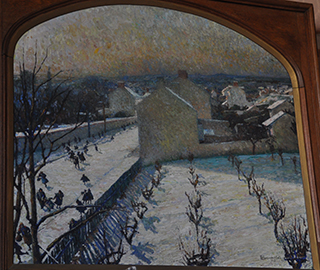Prochain point : lat="49.00115" lon="1.9744"

The painter Emile Boggio
The most Vauxois of Venezuelan painters
A landscape painter
Born in Venezuela, Emile Boggio (1857-1920) arrived in Paris to study at the Académie Julian from 1878 to 1883. He participated in the Salon of French Artists for the first time in 1883, where he won a medal. In 1900, his work came closer to that of Pissarro and Monet. His post-impressionist art was characterized by symbolism. He gave an expressionist touch to his work. From the early twentieth century, he regularly stayed in the "Oise Valley " and the "Seine Valley," where the variations in light appealed to the painter's eye. He built a house and workshop at a place called "Le Gibet" (the gallows) at Vaux-sur-Seine, and moved to Auvers-sur-Oise in 1910. The year before his death, he returned to Caracas, where he exhibited a set of fifty-three works. The exhibition was recognized as a new development in local modern art and he was thus considered one of the pioneers of post-impressionism in Venezuela. He was buried in Auvers-sur-Oise cemetery, near the Van Gogh brothers.
The “grande rue” series
Between 1901 and 1913, Emile Boggio painted a series of eight large paintings depicting the same subject: the main street in Vaux-sur-Seine in different seasons and at different times. These works bring out the perenial aspect of symbolism through the recurring motif and especially the modernity of the pre-expressionist style. They reflect the atmospheric variations of light on a subject.
The paintings are not dated. They are true decorative panels measuring 130 cm x 150 cm; their beautiful wooden frames were made by the artist himself.





